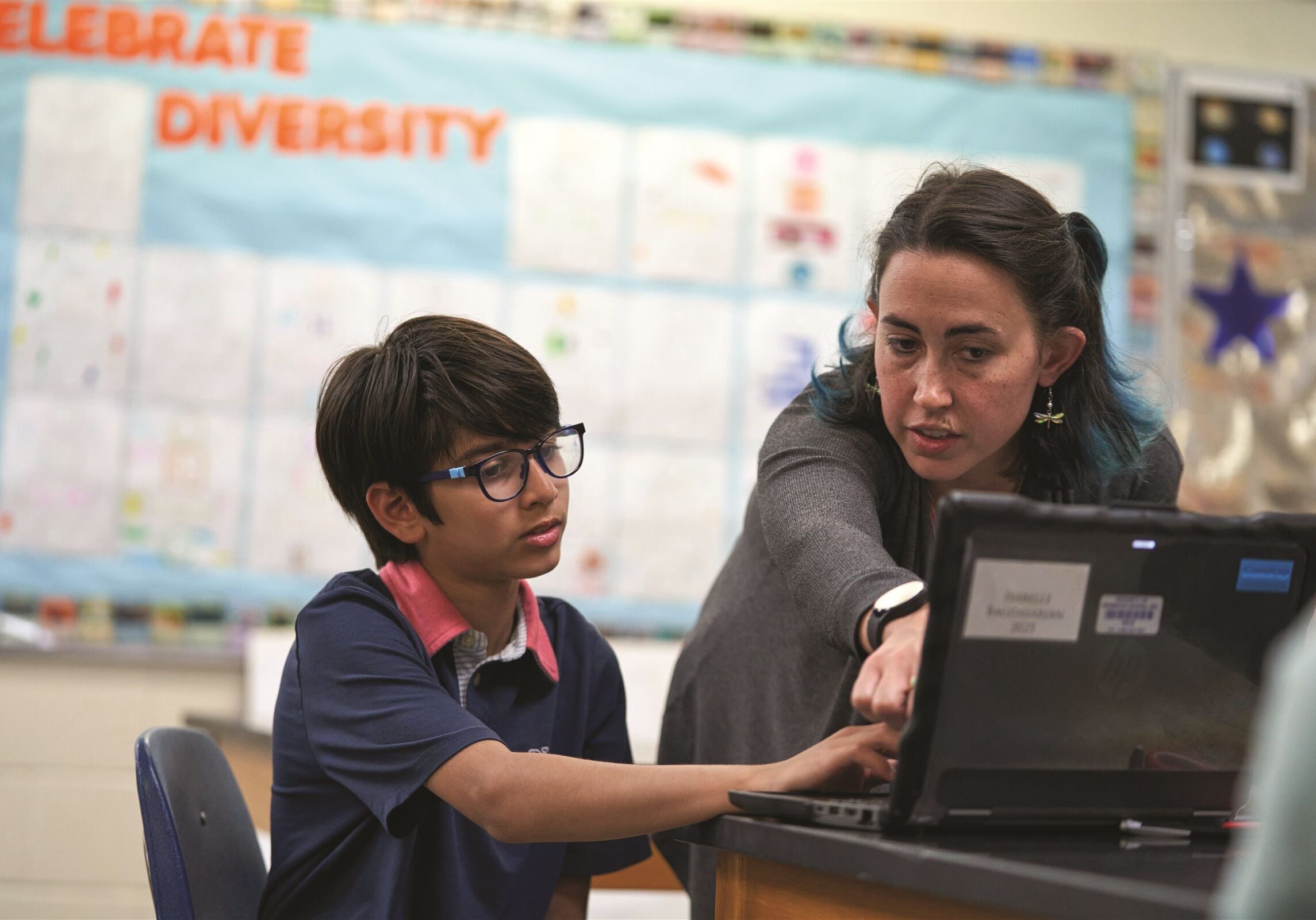Inquiry Based Learning

Mrs. Goodrich cites her participation in Confratute, a summer program at University of Connecticut, as one source of inspiration. Confratute provides educators with research-based practical strategies for engagement and enrichment learning. There, Mrs. Goodrich experienced “the full-on inquiry method,” including a project where participants chose a gravestone in an old cemetery and researched every aspect of it—the person, the lichen, the stone, the year. She describes this approach as teaching outward, rather than upward. Working against traditional compartmentalization, Mrs. Goodrich encourages her students to follow every thread. She relishes the interdisciplinary, constantly evolving nature of her curriculum. At Renbrook, she says, she has the freedom and the resources to be inventive and adaptive as a teacher.
Fifth-grade science looks at space and connects with the fifth-grade Humanities course by focusing on exploration/migration. What if we were to colonize Mars? Mrs. Goodrich describes some of the elements of the course.
- Stars: We study a star trail map generated by time lapse photography. What’s going on here? Students investigate Earth’s rotation and revolution and navigation by the stars.
- Shadows: We go outside and study our shadows. How do they change in length and intensity over time? What if you had no clocks or calendars? You can use your shadow to tell time!
- Constellations: We use a simulator that shows the night sky of Hartford at any given time. How does it change? Students choose one constellation and follow it over time. Then they invent their own constellations, complete with Latin names and myths, and make laser-cut keychains which project their constellations when light is shone on them.
- A little chemistry: We consider the history of alchemy. What if we are moving into space? Students copperplate steel nails.
- Life science: We look at growing things. How do you recognize life? We observe worms, study food chains and the interdependency of species.
- Psychology: We investigate astronauts and their training. What can we learn about living together?
A brief sample of the STEAM curriculum in Grades 6-8 shows the hands-on, interdisciplinary nature of the students’ projects:
Sixth graders are solving problems through technology, learning to use tools that they can then employ in all their classes—for instance, the gladiator project in Latin and the food truck project in math. In STEAM, they also focus on coding, observing the connection to grammar, punctuation, and syntax. “Let’s eat Grandma,” versus “Let’s eat, Grandma.”
Seventh graders work in 3D design. They build spinning tops, modifying their designs to see whose can spin for the longest time. Building obelisks, they take a detour into hieroglyphics. Then there’s the chair project. Each group designs a chair and gives their design to another group to execute. After they try sitting in their chairs, they must repair them!
Eighth graders complete a year-long capstone project of their own devising; Mrs. Goodrich helps with implementation.
Mrs. Goodrich seeks opportunities to support and co-teach, inviting people into her classroom to use the tools, filling her free periods with consulting. As a guest in fifth grade math, she teaches binary, the language of computers. To help fifth graders understand base ten place value, she explores Egyptian, Mayan, and Chinese number systems with them. When seventh graders are studying The Call of the Wild in their English classes and canine communication in their science classes, Mrs. Goodrich helps them build a 3D working paw.
Teaching changes to meet our time. “People are scared of the unknown,” Mrs. Goodrich says, “But with fast changing technology, our time is defined by the unknown. Teachers can no longer be experts; they must learn along with the kids. Kids learn so much, so fast, without instruction. It’s empowering, but also problematic. Algorithms direct them to see only what they like to see, and that’s addictive. We need to teach them to challenge their assumptions, bring them into contact with sources that challenge what they think they know.” Mrs. Goodrich emphasizes that it’s okay, even good to be wrong. “Scientists look to be wrong! If an experiment works 99 times but fails the hundredth time, the conclusion can’t be true.”